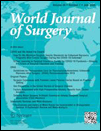Live Liver Donors: Is Right Still Right?
Abstract
Background
Conventional wisdom dictates that a larger hepatectomy is more prone to complications. Consequently, with the donor safety as paramount, the transplant community has intuitively been proponents of left lobe donation in live donor liver transplantation (LDLT), thereby satisfying the tenet of double equipoise. More recently some data suggest that this may not always be the case, especially in established centres. Our aim was to compare right and left lobe donor outcomes in LDLT from a centre with cumulative experience.
Methods
Review of a prospectively collected database of right and left lobe liver donors operated between August 2009 and July 2017 was performed. Their preoperative demographics, operative and post-operative outcomes were compared.
Results
Of 904 liver transplantations, 458 were right lobe donors [379 without middle hepatic vein (MHV), 79 with MHV] and 58 left lobe donors. There was a significant difference in GRWR and functional liver remnant between the right and left lobe donors (1.27 ± 0.45 vs. 1.03 ± 0.28 p = 0.004, and 63.2 ± 7.9 vs. 37.7 ± 16.3, respectively, p value). The end portal pressure (7 vs. 8 mmHg p = <0.001), peak bilirubin (1.6 ± 0.8 vs. 2.9 ± 1.5 p = <0.001) and day 5 bilirubin (0.8 ± 0.3 vs. 1.4 ± 0.9 p = <0.001) were significantly higher in right lobe donors. There was no difference in blood loss, duration of surgery or peak lactate between the groups. Complications (20.7% vs. 25.9% p = 0.48), including serious complications (Clavien–Dindo > III) (6.9% vs. 8.1% p = 0.95), duration of ICU and hospital stay, were comparable between the groups. Subgroup analysis between left lobe and right lobe with and without MHV donor was also comparable.
Conclusion
Though biochemical differences exist between the groups, no difference in outcomes was noted. Despite larger liver mass loss in right lobe donors, a strict protocol-based approach to donor selection leads to comparable outcomes between left lobe and right lobe donations.




